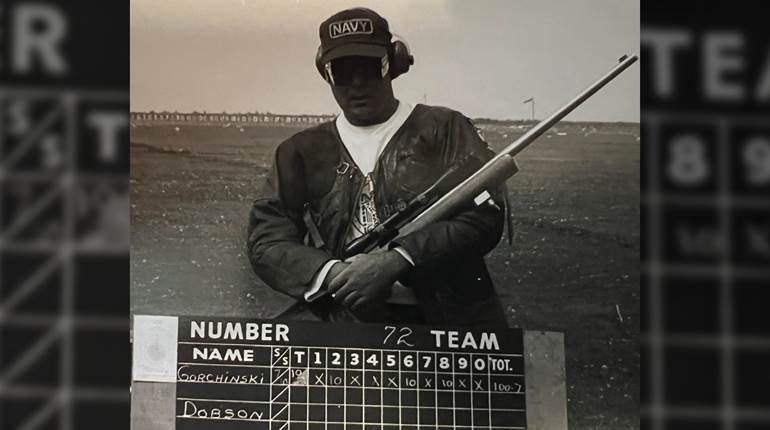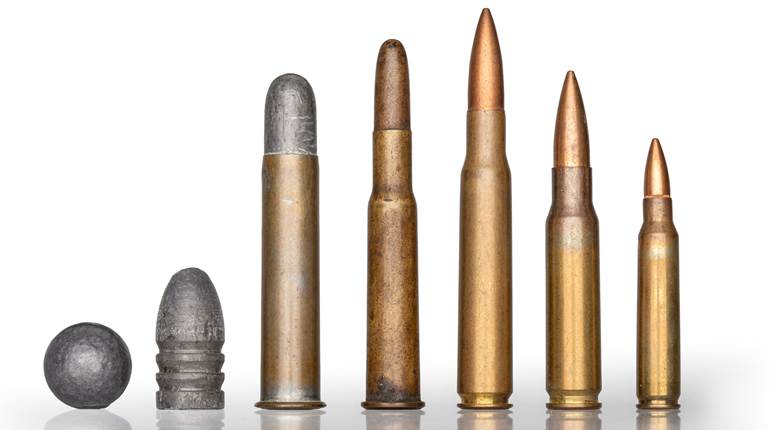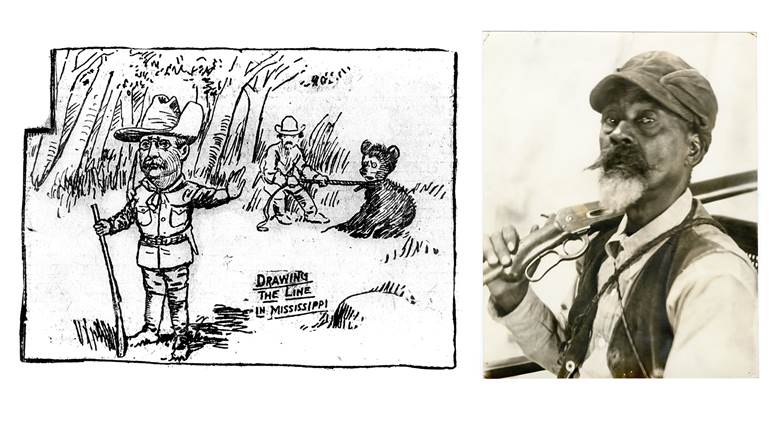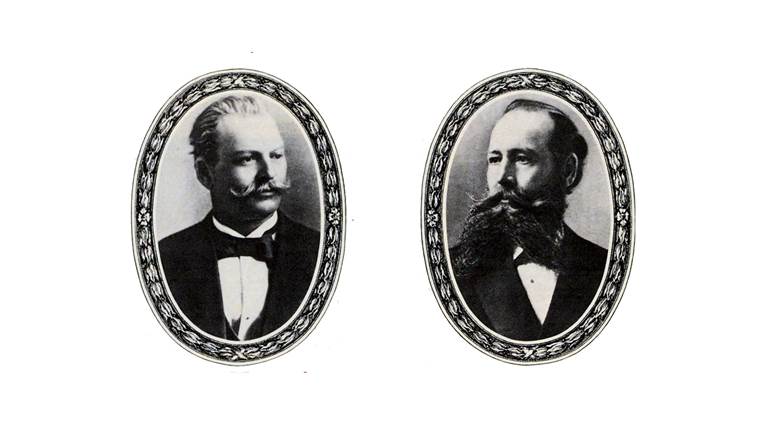

I’m a sucker for action films, and when The Dogs of War was released in 1980, I rushed out to see it. Compared to Frederic Forsythe’s novel from 1974, the film adaptation is a little weak, but still enjoyable. Curiously, Hollywood introduced a unique grenade launcher design, albeit about 45 years late. Christopher Walken, who played mercenary leader Jamie Shannon, procures a new grenade launcher for his team, and which featured in the movie’s promotional posters. The so-called “XM-18” left quite an impression on many viewers. At the time, the revolver-type launcher seemed quite plausible and effective, but it was not listed on the armaments inventory of any military force on Earth.
The armorers of The Dogs of War based their fictional “XM-18” on the very real Manville Gun. Charles J. Manville developed his semi-automatic, spring-operated, revolver grenade launcher primarily for the police market, and introduced it in 1935. The original model Manville Gun was a hefty piece, constructed of steel and aluminum. It was chambered for 12-ga. grenade rounds (18.5x70 mm R), holding 24 grenades in its spring-driven cylinder that was wound before firing. There was no shoulder stock, and the firer held the Manville with two wooden pistol grips. To load, the Manville Gun opened (unscrewed, really) into halves at the rear plate of the cylinder. Each cylinder has its own firing pin.

The Manville Gun was primarily intended to fire tear gas rounds to support police operations. Sales were slow and interest was limited in the initial model, so Manville created additional versions:
The 26.5 mm Manville Machine-Projector (1936): This version holds 18 rounds of 1” (26.5 mm) shells. The barrel is shorter by a little more than an inch, and hard rubber replaced wooden grips. The cylinder access was improved, and the rear plate could be rotated to the right using the rear grip to make loading easier and faster. Barrel and ammunition cylinder inserts were available to allow the use of 12-ga. shells.
The 37 mm Manville Gas Gun (1938): Within two years, Manville was trying to connect with the military market and had introduced a 12-cylinder 37 mm (1.5”) variant. The barrel was moved to the bottom of the cylinder. This was a particularly heavy launcher, designed to be used from a small tripod or a vehicle mount.
Customers for the Manville Gun were few and far between. The severe budget restrictions of the Depression era made a multiple-grenade launcher an expensive luxury for almost any police department or security force. Also, in those days, the notion of less-than-lethal was not widespread.
One documented use of the Manville Gun was during the Terre Haute, Ind., general strikes of July 1935. The community was put under martial law (by decree of Gov. McNutt), and 2,000 National Guard troops moved into Terre Haute to preserve order. Tear gas and flare rounds were fired into the mobs to disperse the rioting strikers.
Apparently, the U.S. military tested the Manville Gun, but no contracts were forthcoming. I’ve seen no evidence that the Manville Gun was ever provided with high-explosive grenades—so it’s viability as a combat arm was questionable. Production of all Manville Guns ended in 1943. It is claimed that after business operations ceased, Charles Manville destroyed all the machinery related to the grenade launcher, including his diagrams and notes.

Let loose in The Dogs of War: The fictional XM-18 grenade launcher plays a vital role in the film, providing fire support for the mercenaries as they assault the president of Sangaro’s mansion and compound. The XM-18 is described as capable of firing fragmentation, tactical, anti-tank, anti-personnel and flechette grenades, and able to discharge all 18 cylinders in just five seconds! The Manville Gun used in the film is one of the later 26.5 mm models with an 18-round cylinder. The well-aged revolving grenade launcher made a significant impression on a new generation of gun aficionados and even a designer.
The Hawk MM-1: The Manville Gun may have ceased production, but remaining examples provided inspiration for other designers. During the 1980s, Michael Rogak of Hawk Engineering used the Manville Gun as inspiration for the Hawk MM-1. The MM-1 is chambered in 40x46 mm R and has 12 cylinders. Comparatively heavy, the MM-1 weighs about 13 lbs. unloaded. There are some claims that the MM-1 has seen service with U.S. Special Forces along with other nations’ special units, but if this is so, it is on a very limited basis. The Hawk MM-1 had its own movie debut when it was featured in the hands of Arnold Schwarzenegger in Terminator 2: Judgement Day (1991).
Movie star II: the “son of the Manville Gun,” the Hawk MM-1, in the hands of Arnold Schwarzenegger in the 1991 film Terminator 2: Judgement Day.
Sometimes life imitates art. In this case, that is mostly true. The 45-year-old Manville Gun made a splash on the big screen in 1980, and inspired an updated design based on the same principles. But even as the Hawk MM-1 made its Hollywood debut just a decade later, the middling adoption and laggardly sales continue to plague the concept. As it stands now, the design looks perfect for the movies, but not for the battlefield.






































